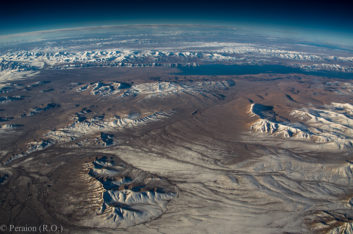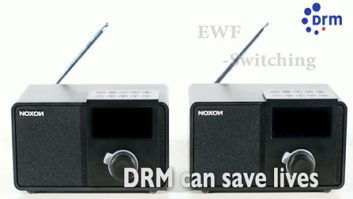The author is chairman of Digital Radio Mondiale.
A picture is worth a thousand words and a digital radio coverage map might be worth a million dollars or more in business.

We might stress in documents and presentations the undeniable benefits of digital radio: Better audio, extra data, more choice, emergency warning capability and less spectrum. For DRM specifically the list also includes, the capacity to offer improved audio and data for large or local coverage very often using the existing basic infrastructure.
This can be illustrated with audio and can be doubled by screen grabs showing data, like names, colorful pictures of singers and albums, stock exchange values, etc. This is often impressive but not as easily understood as a map.
CORRECT REPRESENTATION
To many of those interested, a big global map showing the progress of one or another digital audio broadcasting standard is unbeatable. It is also immediately understandable and appreciated, especially by regulators, cost-conscious receiver manufacturers, the car industry and even listeners.
Seeing your [digital radio] standard represented by deep (actual transmissions) or faint colors (trials and demos that might lead to rollout or nothing at all) over large swathes of Europe, India, China, the Middle East or Asia, certainly gives confidence and creates the image of unstoppable progress.
But are clever marketers just using these maps as a fictional tool to impress the right audience?
Firstly, several standards claim the same territory on their respective maps. Is China a DRM, a CDR or a DAB country? DRM in shortwave (pumped 80 hours a day) giving actual and huge domestic coverage is the latest digital radio project in China.
So, maybe, the previous DAB broadcasts are no longer of great significance? Is South Africa a DRM or a DAB+ territory? For the time being, neither, since the country has tried or rather is trying both standards but the Pretoria government has not announced a policy. And the decision might go both ways, which would be good for the country, the standards and the maps.

Then, does a short workshop, a much-touted future trial, a feeble transmission on a low-power and unloved transmitter or a favorable meeting at a ministry turn a country into a colored spot on the global map? And how many transmitters and broadcasts and receivers qualify a country as a truly digital radio territory?
BLURRED LINES
The purists might say the only truly undeniable deep color patches on anyone’s map represent the following: DRM in India, DAB in Norway and the United Kingdom (though FM continues to function in the country), and HD Radio in the United States.
And there is also the question of actual coverage. We might say DRM is covering the whole of Western Europe in shortwave but this is mainly for a short time and for the BBC World Service and digital pioneers. We could also say that a DAB transmission in a capital city, sometimes of a small Central European country, does not represent coverage of a whole country.
Is HD Radio really taking hold of Mexico when just some border stations are using the standard? There is no right or wrong answer, just the realization that generalization can often lead to distortion. We might even have to agree with what a famous politician was glossing on the famous saying: “One picture is worth a thousand denials.”
Rather than using the map argument, proponents of the various digital broadcasting systems need to give a true picture of what is really happening, while admitting that true coverage without false extrapolations is important but so is engagement and extending listening time, especially for the younger generation, Generation Z and the Millennials.
Radio is doing well everywhere but the big brands like Disney+ and now Amazon HD Music are muscling in. Streaming is everywhere and soon we’ll see the unthinkable, a Podcast Radio station (announced recently for London) using the radio platform to attract young listeners to a format they know and have grown up with, the podcast, whose roots were in radio in the first place.
PROMOTE THE FACTS
It is against these developments that digital radio needs to hold its own and do much better. Internet is not a threat; it is just an accompaniment. In the U.K., according to Rajar, 23% more audio hours have been consumed in the last four years. But many broadcasters are looking at how audio is being consumed by the younger generation and a more realistic picture of how audio is being enjoyed is shaping their thinking and strategies.
Instead of playing with maps, which become often obsolete and inaccurate the moment they are included in the slide pack, digital radio proponents could show that digital radio can deliver all that’s needed to attract the younger listeners: Better audio and larger coverage (DRM), greener broadcasting, news, emergency warnings, pictures and even podcasts.
Maps are flat and inaccurate, often a blunt instrument used to persuade the industry that there is only one standard or one version of the digital radio world. Digital radio is many-layered and very relevant in all parts of the world, in all countries developed or developing. It is also still gatekeeper-free and protective of the listener’s identity.
So maybe a picture is worth a thousand words but be sure to use only those that illustrate the picture accurately. This way the picture will provide encouragement and good vibes for the future of radio.












